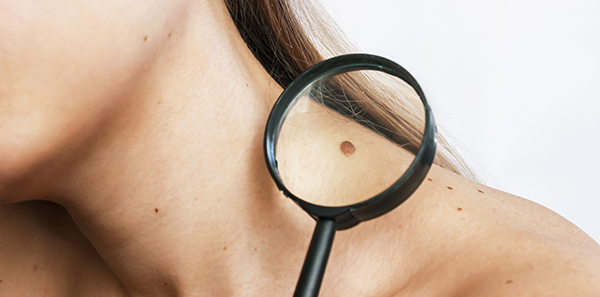
To detect whether moles are dangerous or benign, aspects such as shape, size and colour have to be taken into account. On World Melanoma Day we explain the key factors in telling them apart and preventing one of the most harmful cancers.
In most cases moles (nevi) are harmless. They develop during childhood and adolescence, and over time they may change their appearance or even disappear. The vast majority of melanomas (malignant moles) are dangerous from the time they appear and are usually caused by excessive exposure to the sun, burns, hormonal changes or artificial tanning.
What should you pay attention to? Below we describe the ABCDE rule, which is very useful for detecting melanomas:
Asymmetry: mole not symmetrical in shape.
Borders: edges not very well defined.
Colour: irregular colouration or different colours.
Diameter: larger than 6 mm.
Evolution: has changed shape, colour or size.
Malignant moles don’t necessarily present all these characteristics; they may only have one or two. This is why it’s important to familiarise yourself with them and be aware of any changes.
PREVENTION
It’s advisable to examine your skin once a month, paying special attention to your nails, palms of your hands and soles of your feet, head, back and underarms. They’re the places you don’t look at very often, so they’re also the most dangerous places.
Plus, you should follow a series of guidelines to take care of your skin and prevent melanoma:
- Don’t go out in the most dangerous hours of sunshine (from 11:00 am to 5:00 pm), especially in summer.
- Use sunscreen (at least factor SPF 30) all year round, even on cloudy days.
- Protect yourself with sunglasses and hats.
- Don’t use artificial tanning sunbeds as they emit UV radiation.
It’s advisable to have a check-up once a year if you have a history of skin cancer.
If you notice an unusual mole that shows changes or displays any of the characteristics referred to above, see your dermatologist to rule out disease.












